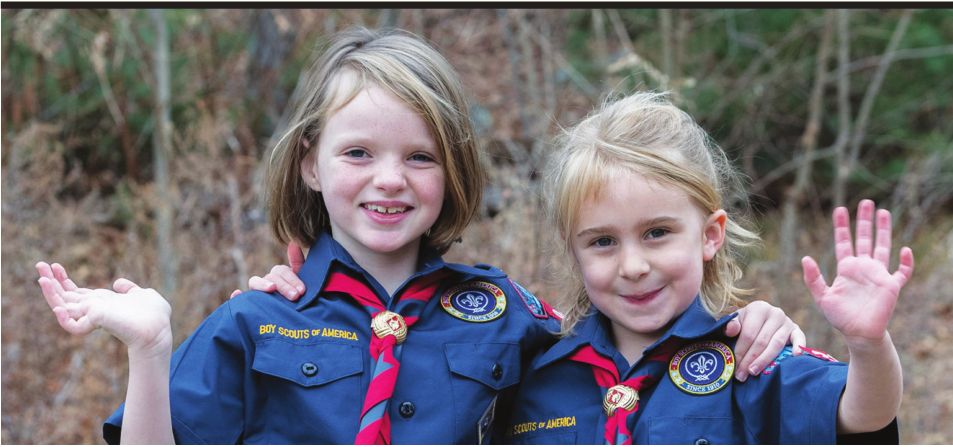
 We welcome letters. Please include your full name, address and telephone number. We edit all letters. Send them to [email protected].
We welcome letters. Please include your full name, address and telephone number. We edit all letters. Send them to [email protected].
SCOUTING INCLUDES GIRLS Thank you for the great article titled “Scouting for a new generation” (Capital City Parent, Winter 2018, by Elizabeth Watson). I have to share one small correction. Starting on Feb. 1, 2019, our “flagship program” titled Boy Scouts will become “Scouts BSA” ... not just “Scouts” as mentioned in the article. Our overall organization name will remain Boy Scouts of America.
Scouts BSA will allow for troops for boys as well as troops for girls, and members of Scouts BSA all have the opportunity to become Eagle Scouts, if they work hard and meet the requirements.
We have great respect for any youth organization that builds character and develops leadership skills, including 4-H, Girl Scouts and other similar organizations.
Including girls is not new to the Boy Scouts of America. Our older youth programs, Exploring, Venturing and Sea Scouts have been co-ed since 1971. This new, single-gender program is in response to the demands and requests of today’s families.
Dan O’Brien Scout Executive & CEO Abraham Lincoln Council Boy Scouts of America
DR. AYOUB’S DEFENSE In the Dec. 6 Illinois Times article titled “From vaccines to child abuse” Bruce Rushton suggests that my testimony on infantile rickets is out of line with the medical literature and that I lack expertise in rickets. These claims are incorrect.
I have been qualified as an expert in radiology and testified on rickets more than 70 times in five countries. I have published peer-reviewed papers on this subject, presented at nine medical conferences and given numerous invited lectures, including debates with leaders of the Society of Pediatric Radiology and the AAP’s child abuse committee. My testimony is supported by the literature and, importantly, other independent medical experts in court. In the majority of my overall cases, charges of abuse are dismissed.
Infantile rickets usually does not have clinical signs but is discovered when infants are x-rayed for other reasons, typically fractures occurring with normal handling/minor trauma or for other illnesses (pneumonia, seizures). Its distinct radiological findings differ from classical forms in older children – up to 50 percent can fracture. The peak age is 2-4 months. This has been known for more than 100 years. Other signs of healing rickets may be misinterpreted as fractures. This is demonstrated in a peer-reviewed article that I co-authored and that established the basis for the Florida post-conviction case recently covered by CNN.
Today most standard texts do not describe infantile or healing rickets, ensuring that many pediatric radiologists and pediatricians will not recognize them. When these findings are mistakenly attributed to abuse, children will be removed from good homes rather than treated for medical conditions, as occurred in the cited U.K. case. The purpose of my testimony is to prevent the unnecessary destruction of families based on a misunderstanding of radiological images. My conclusions are supported not only by extensive historical literature but by surprisingly high prevalence rates (87 percent in dead infants; up to 22 percent in healthy, living infants).
While my credibility in court is often questioned with respect to my past opinion that toxins (including mercury) have no place in vaccines, this should not be controversial. Attacking the messenger when the message is powerful is an old trick that should not be used in court or in journalism. David Ayoub Springfield